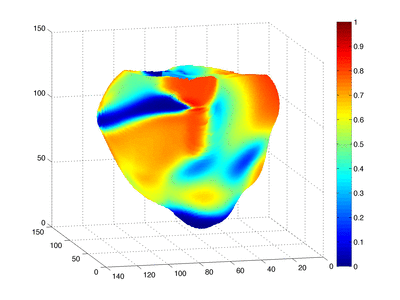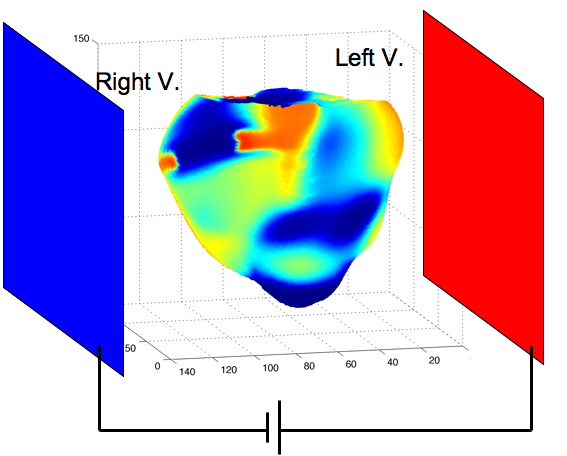

Although defibrillation, by the application of large current shocks,
is realized daily around the world, there is no complete theoretical
explanation for how a defibrillator works. The magnitude of the
electric field that reaches the heart must be around 5 Volt/cm for
around 10 ms to ensure successful defibrillation. In this project, we
are reproducing through numerical simulation the process of
defibrillation. The objectives are twofold: first getting a better
understanding of how the defibrillation is taking place in the heart
ventricles and secondly to help in design better (less invasive)
strategies for realizing at lower energy level successful
defibrillation. Details of some numerical and mathematical treatments
of defibrillation may be found in this reference by Keener and Lewis
(J. Theor. Biol., 200, 1,
1999).
Here below is a movie (left) of three-dimensional simulation of the
defibrillation and on the right the positioning of the electrodes.
The simulation is performed on a rabbit heart's ventricle and
incorporates the detail of the fiber orientations.
 |
 |
For this project I am collaborating with the research group of Prof. Flavio Fenton
(Physics at Gatech, USA) and Prof. Elizabeth Cherry (Computer
Sciences at Gatech, USA).
In the first semester of 2018, I have been granted a Fulbright Fellowship during a stay at the Nora Eccles Harrison Cardiovascular Research and Training Institute (CVRTI) at the University of Utah in the group of Prof. Frank B. Sachse. During this research stay, we have studied the influence of the fibrotic content in the myocardium upon the defibrillation shocks. A summary of the main findings and the modeling details can be found in this article (2019).